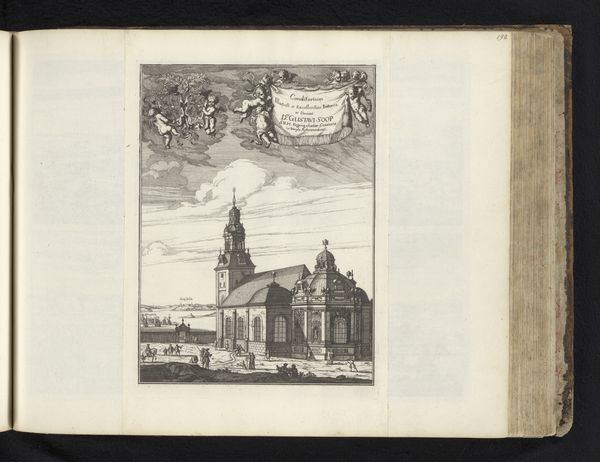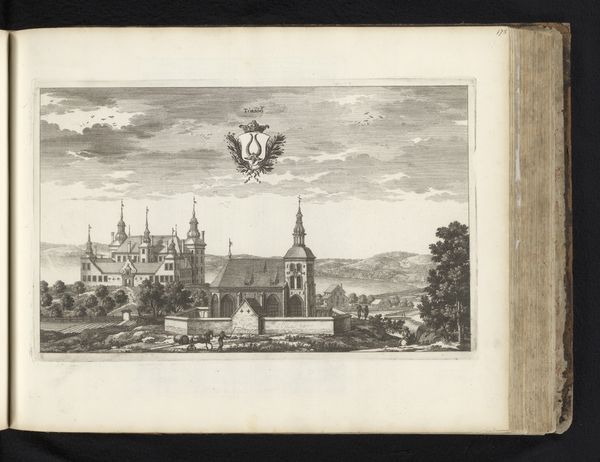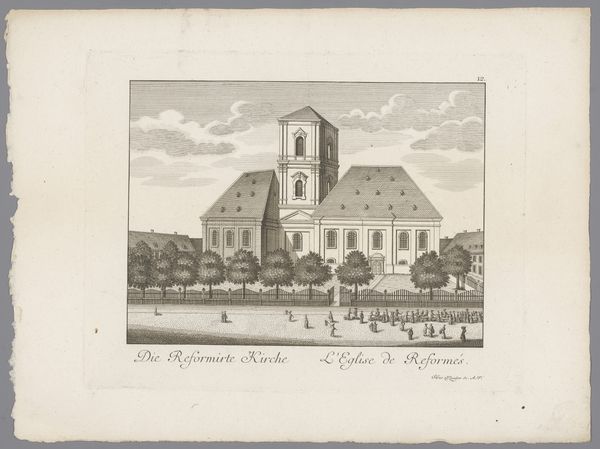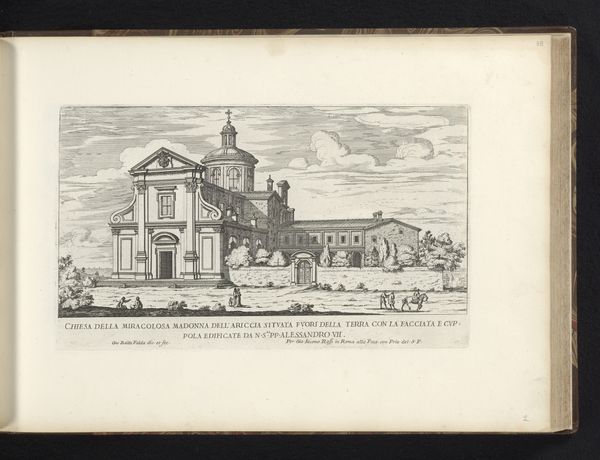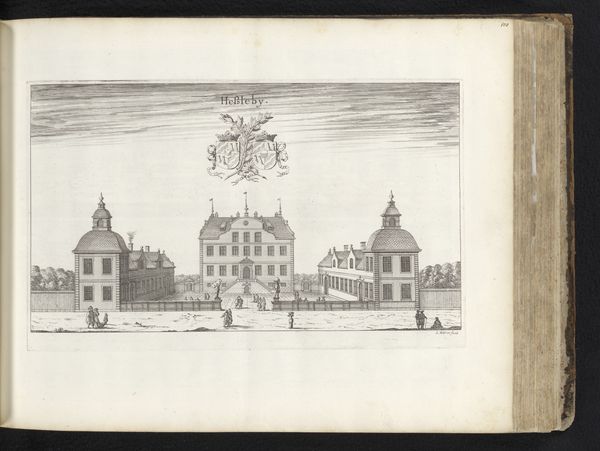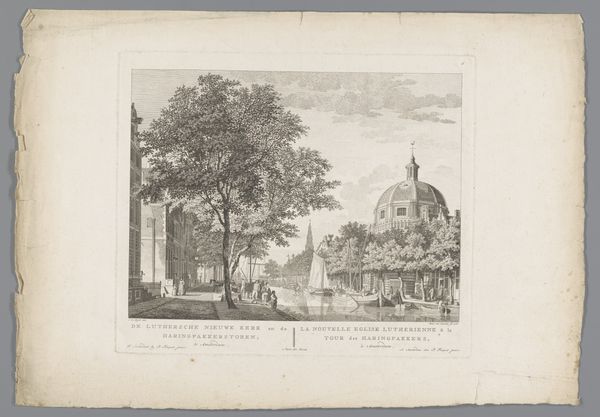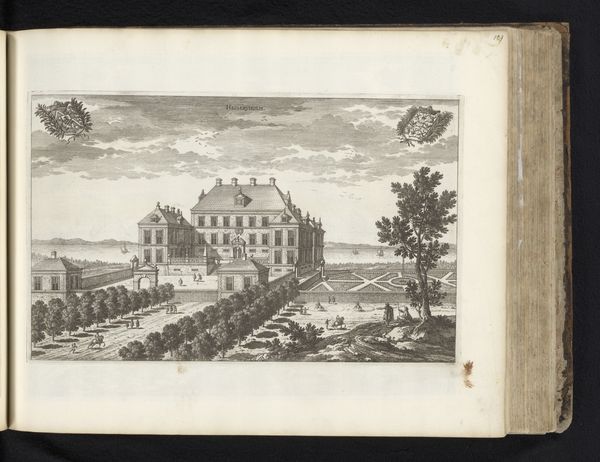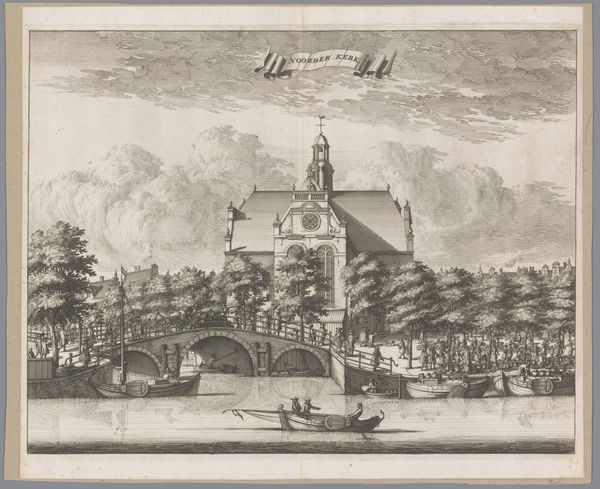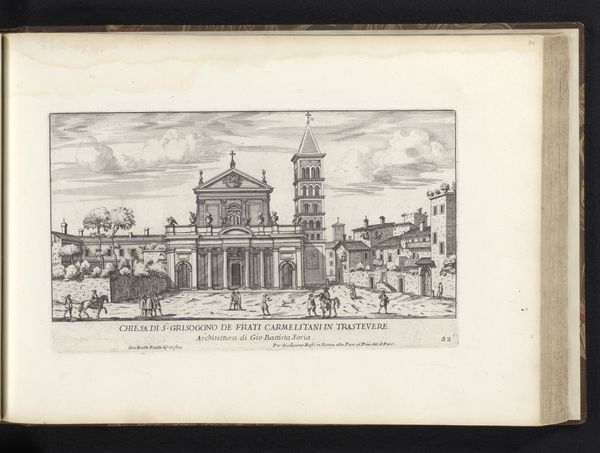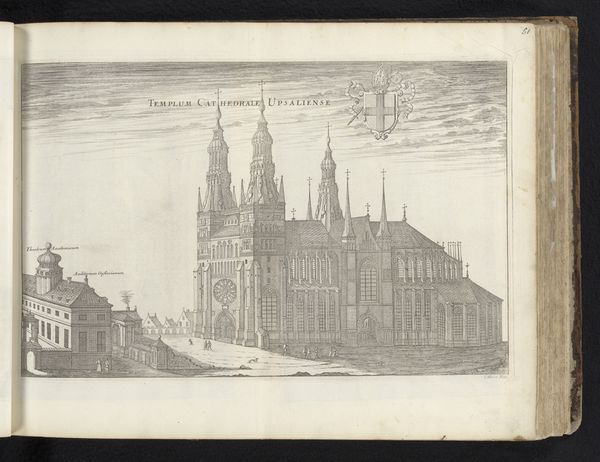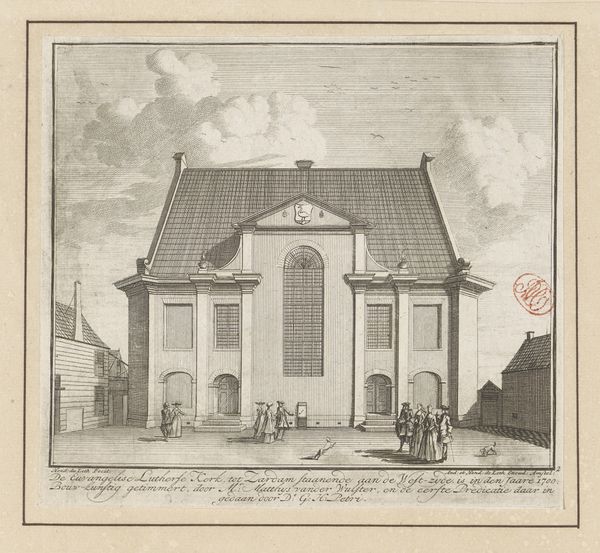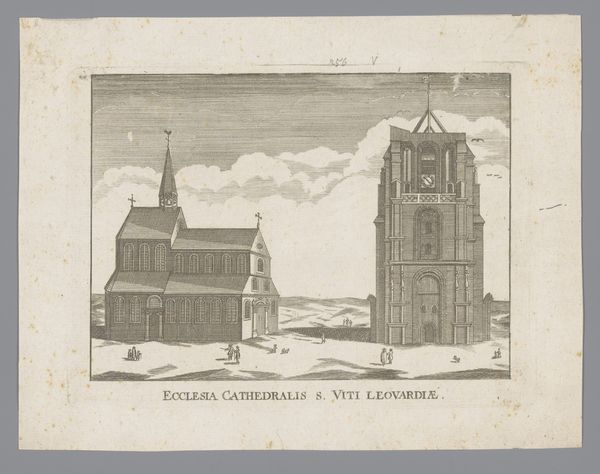
drawing, print, engraving, architecture
#
drawing
#
baroque
# print
#
cityscape
#
engraving
#
architecture
Dimensions: height 312 mm, width 197 mm
Copyright: Rijks Museum: Open Domain
Curator: Look at this lovely, baroque cityscape: "Gezicht op de Floda kyrka," or "View of Floda Church." It's an engraving by Adam Perelle, dating back to 1670. Editor: My initial impression is the sharp, precise lines! The artist truly understood how to construct space. There's such a strong emphasis on architectural form and geometry, almost mathematical in its precision. Curator: The clean, almost clinical depiction of this building does raise interesting questions. This engraving was probably commissioned; how do you think the image functions within the social structures of its time? Whose story is Perelle telling here? Is it the story of the commissioner's prestige? Or perhaps, more subtly, the consolidation of state power through religious infrastructure? Editor: Undoubtedly, these elements are present. But structurally, the image strikes a beautiful balance between the linear precision of the church itself and the subtle variations in the landscape. Perelle really used linear perspective to construct the church. This is Baroque idealism, really. The architectural ideal stands in the center. The church design itself, the perfectly erected structure and symmetry all reflect the order God is instilling. Curator: Yet the church isn’t isolated. The surrounding community populates the print, subtly underscoring the church’s connection to everyday life and community. It reminds us that such religious architectures are, invariably, places of human gathering. Editor: Agreed! See the way Perelle juxtaposes these elements? The formal, constructed order alongside the natural, less predictable elements? I appreciate how the atmospheric effects give an airy feel. I can't help but see Perelle showing how architecture and landscape mirror and support each other through contrast. Curator: Yes. When situated within the political landscape of the 17th century, this view offers a silent testimony to how religious architecture not only shaped the physical landscape but also structured social and political interactions. Editor: Thinking purely formally, it's a marvel to behold Perelle's technique, transforming simple lines into such a compelling vista. I will study the details. Curator: Indeed, a beautiful view that tells many stories depending on the angle. I wonder, which stories are hidden?
Comments
No comments
Be the first to comment and join the conversation on the ultimate creative platform.
